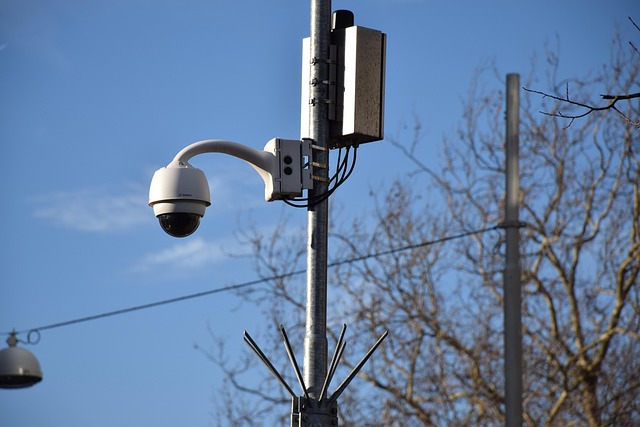In today's digital world, achieving a healthy balance between fostering meaningful social connections and safeguarding personal privacy is an art that requires introspection and strategic choices. This involves setting clear boundaries, prioritizing quality interactions over quantity, and openly communicating comfort levels with different interaction types. By curating your online presence and time allocation, you can reclaim control over your digital life while nurturing authentic relationships offline, ultimately enhancing both your social life and personal privacy.
In today’s highly connected world, balancing privacy and social life is an art. As our interactions shift online, understanding where to draw the line between sharing and safeguarding personal space becomes crucial. This article provides practical tips on achieving harmony. We’ll explore setting healthy boundaries, managing social media time, prioritizing meaningful connections, and establishing open communication. Through self-reflection and adjustments, you can master the delicate balance of enjoying social engagements while maintaining a sense of privacy.
- Understanding Your Privacy Boundaries
- Setting Healthy Social Media Usage Limits
- Prioritizing Quality Over Quantity in Social Interactions
- Establishing Clear Communication Guidelines
- Creating a Balance Through Self-Reflection and Adjustment
Understanding Your Privacy Boundaries

In today’s highly connected world, balancing your social life while maintaining a sense of privacy is a delicate act. Understanding and defining your personal privacy boundaries is the first step towards achieving this equilibrium. Reflect on what feels comfortable for you—the level of information you wish to share, the type of interactions you enjoy, and the extent to which you want to be available online or in person. This self-awareness empowers you to make informed choices about how much of your personal life to expose and to whom.
When it comes to balancing social life and privacy, setting clear limits is key. Decide on the types of interactions that feel safe and enjoyable for you. For instance, you might choose to be more open with close friends and family but maintain a stricter boundary when interacting with acquaintances or online followers. This doesn’t mean you have to isolate yourself; instead, it involves selecting quality connections over quantity. By recognizing your privacy boundaries, you can navigate social situations mindfully, ensuring that your need for connection doesn’t come at the cost of your personal space.
Setting Healthy Social Media Usage Limits

In today’s digital era, our social lives are often intertwined with our online interactions, particularly through social media platforms. To achieve a healthy balance between privacy and social life, setting clear boundaries is essential. One effective strategy is to establish reasonable limits for social media usage. By allocating specific times for scrolling through feeds and engaging in conversations, you reclaim control over your time and attention.
This approach not only reduces the risk of oversharing personal information but also fosters meaningful connections. When you set aside dedicated moments for social media, you’re more likely to engage genuinely with friends and family, leading to deeper interactions that enhance your offline relationships. In terms of balancing social life, this digital discipline allows you to enjoy the benefits of online connectivity while maintaining a healthy sense of privacy.
Prioritizing Quality Over Quantity in Social Interactions

When navigating the balance between privacy and a vibrant social life, it’s crucial to shift your focus from balancing social life as a quantity to quality. Not every interaction needs to be filled with constant digital connection or crowded gatherings. Prioritize meaningful conversations, deep connections, and shared experiences with trusted individuals. This doesn’t mean avoiding events or people; instead, curate your social calendar to include activities that truly nourish your soul and allow for genuine engagement.
By prioritizing quality over quantity, you create spaces for authentic relationships to flourish. This mindful approach ensures that when you do engage in social settings—whether in-person or virtual—you’re fully present and invested in the moment, fostering deeper connections while still maintaining a healthy sense of privacy.
Establishing Clear Communication Guidelines

In today’s digital age, balancing social life and privacy is more crucial than ever. Establishing clear communication guidelines is a fundamental step in achieving this delicate equilibrium. Begin by defining your comfort levels with different types of interactions—public posts, direct messages, or personal conversations. Share these preferences openly with friends and family to set expectations. For instance, you might choose to maintain certain discussions behind closed doors or limit information shared publicly.
Effective communication involves active listening as well. Encourage open dialogue where everyone feels comfortable expressing their boundaries. Regularly review and adjust your privacy settings on social media platforms to reflect any shifts in your comfort zones. By fostering transparent communication, you can ensure that both your personal space and social connections thrive, allowing for a more fulfilling balancing act between the two.
Creating a Balance Through Self-Reflection and Adjustment

Creating a balance between privacy and your social life involves constant self-reflection and adjustments. Start by evaluating your priorities and understanding what truly matters to you in each area. Do you value deep, meaningful connections with a few close friends over numerous casual acquaintances? Or perhaps vice versa? Recognize that there’s no one-size-fits-all approach to achieving this balance; it’s about finding what works best for you.
Regularly assess how you’re spending your time and energy. Are you engaging in activities that nourish both your need for privacy and your desire for social interaction? If not, be willing to make changes. This could mean setting boundaries—like designated “me time” or limiting certain types of interactions—to preserve your personal space while also making a conscious effort to prioritize quality social connections by being more selective about who you spend time with and how often.






